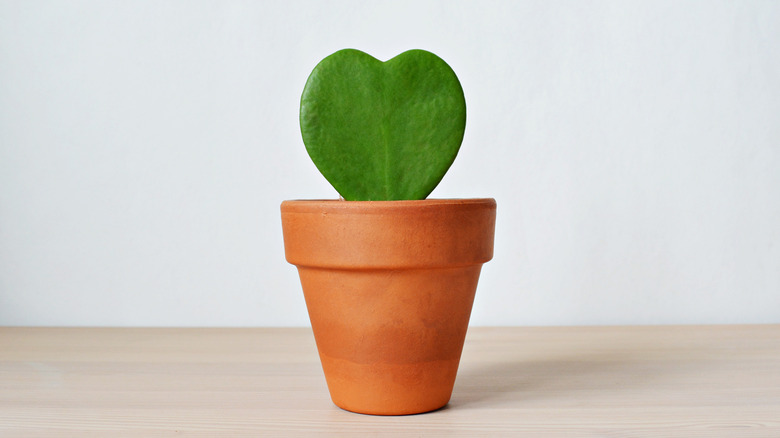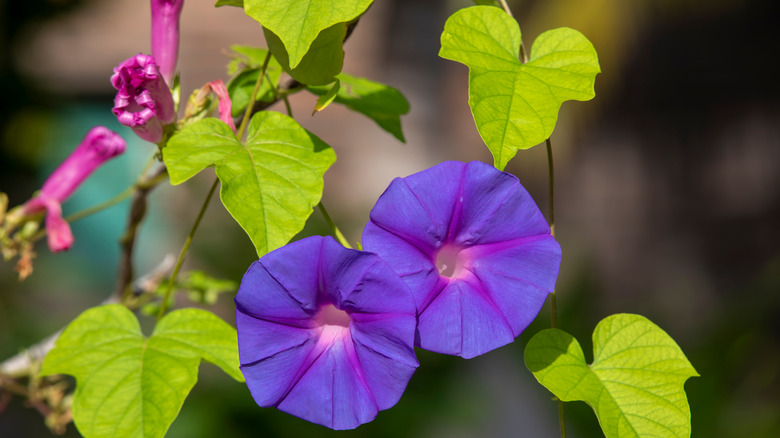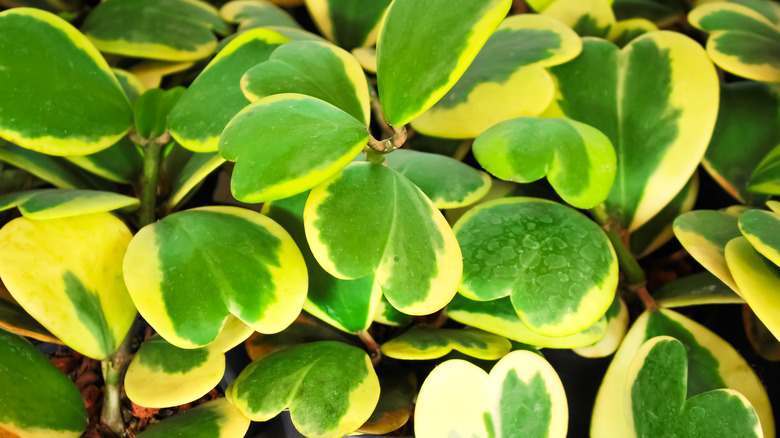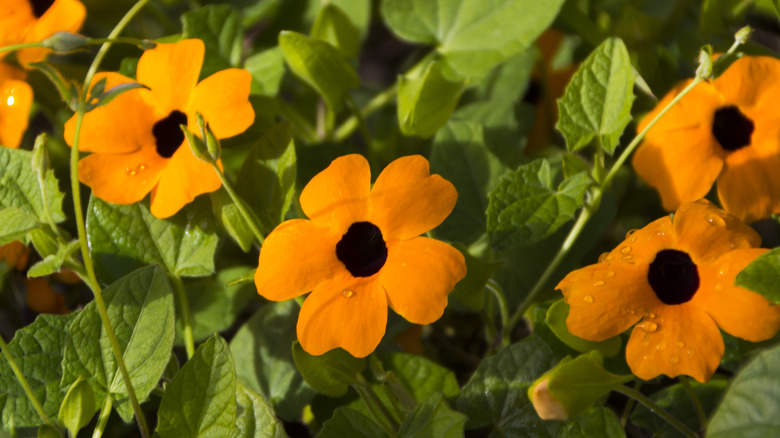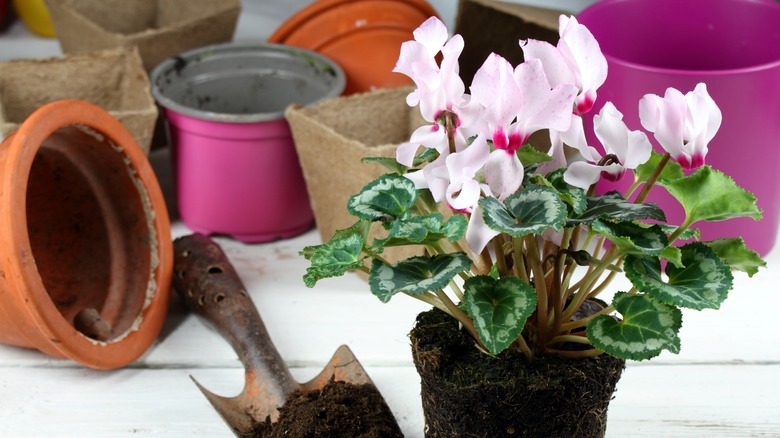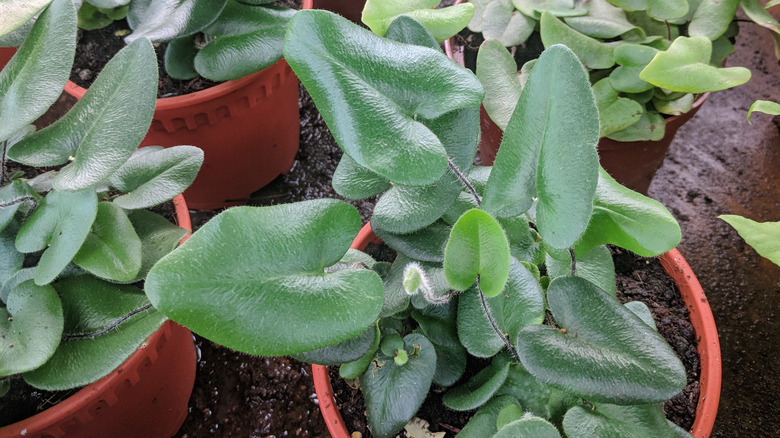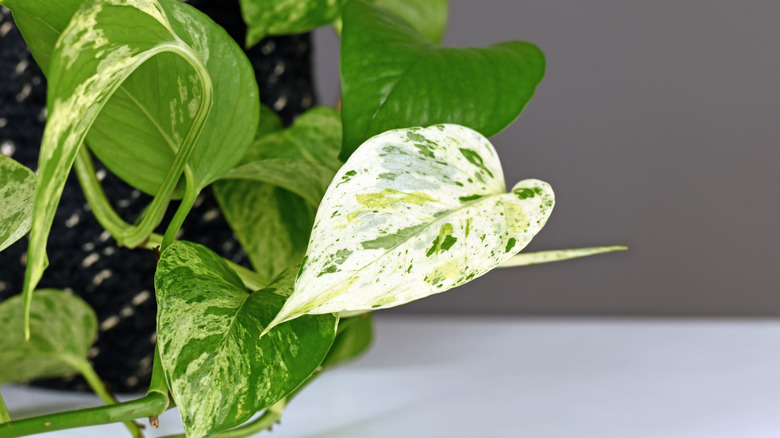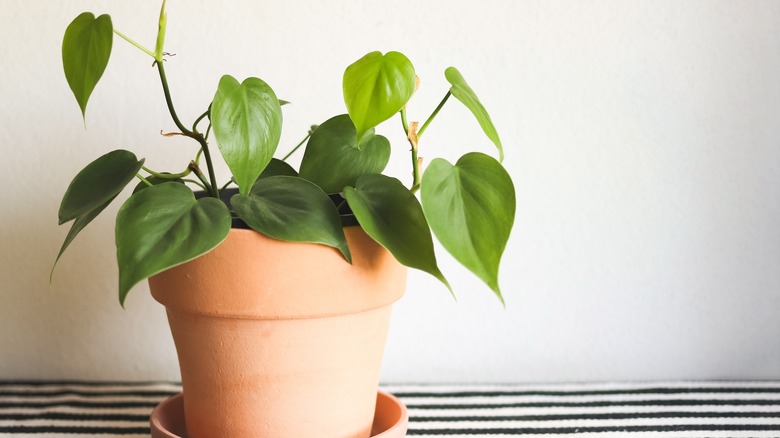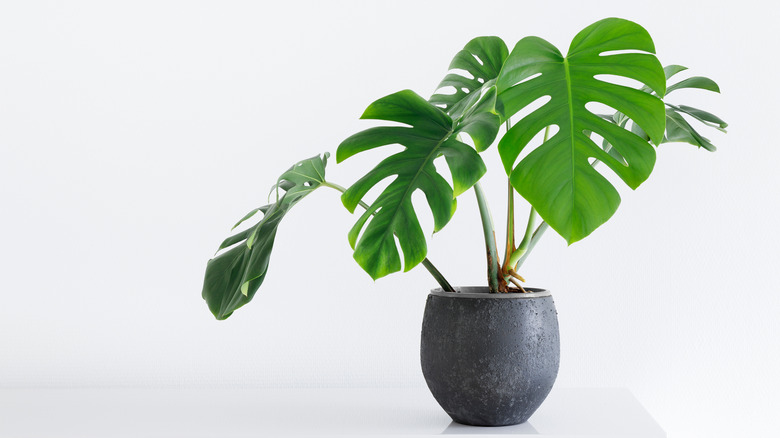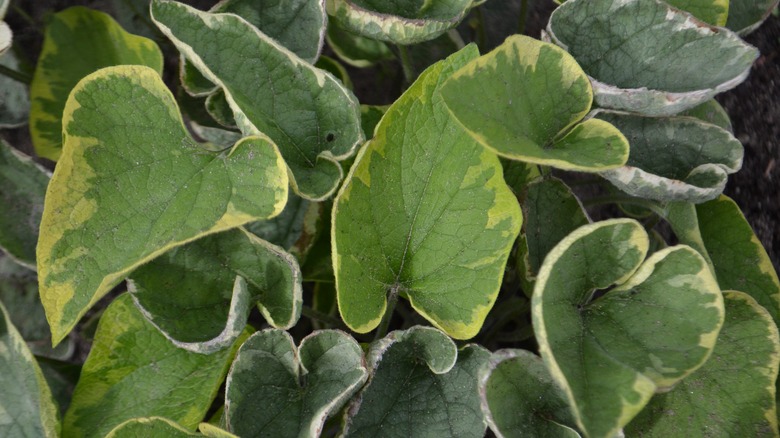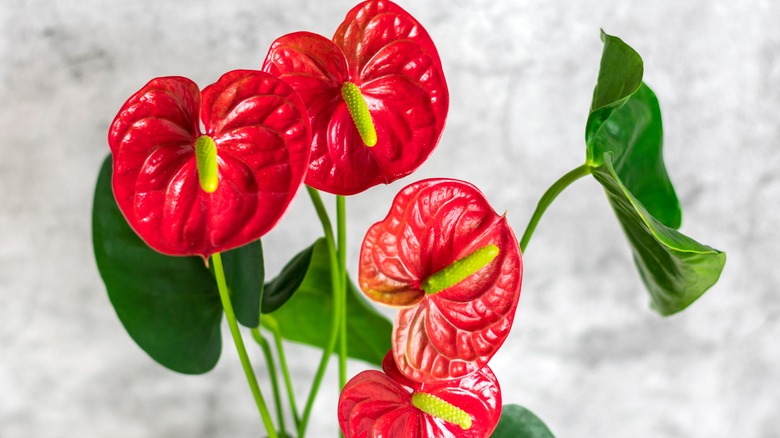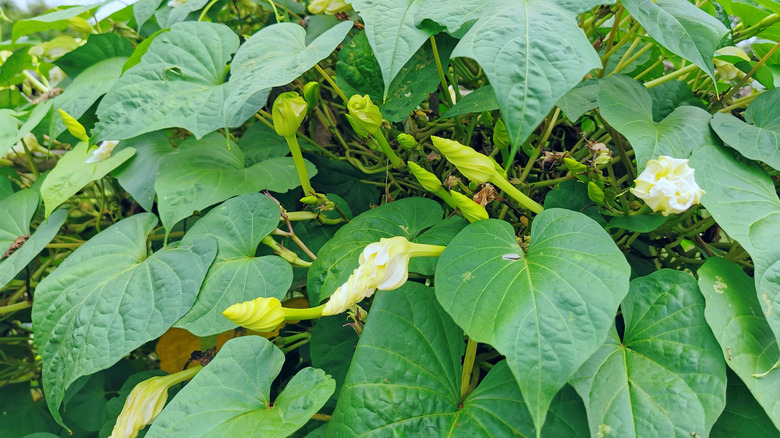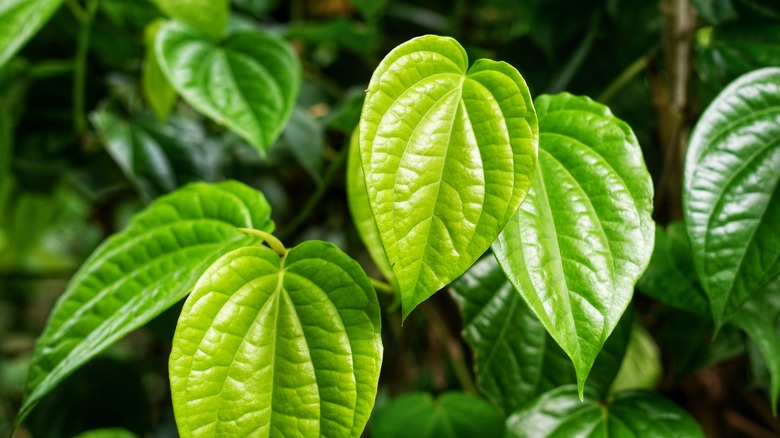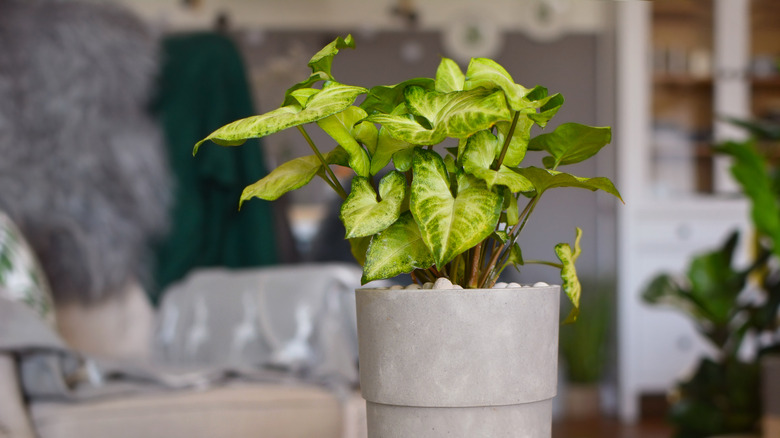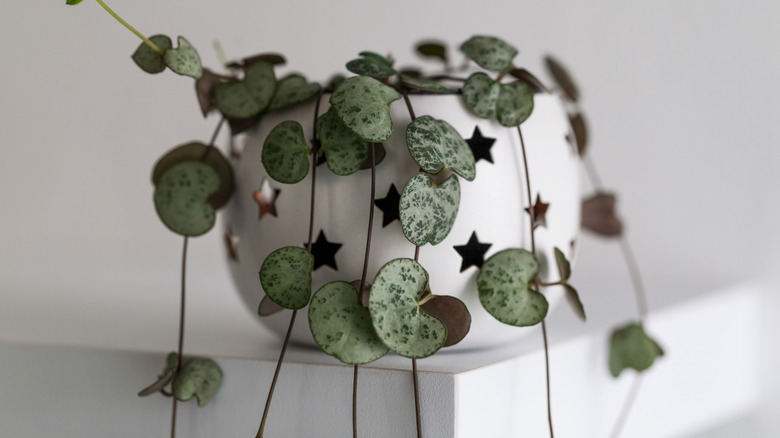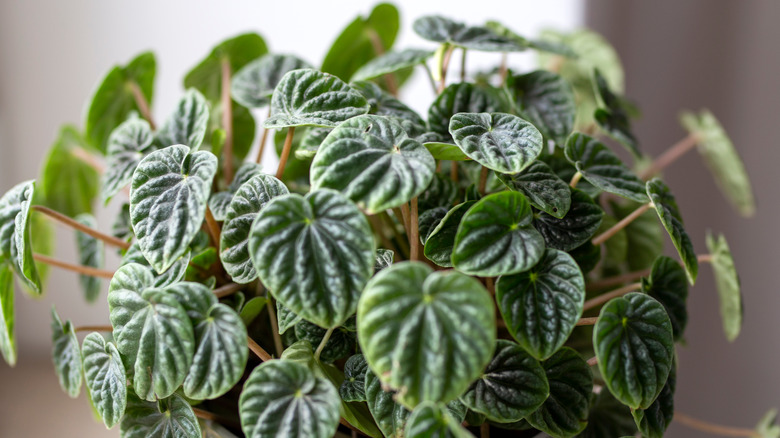15 Houseplants With Heart-Shaped Leaves That Will Bring Love Into Your Space
As we enter into the season of gift-giving, it's a good time to remember that houseplants can make a wonderful and meaningful gift. Houseplant Resource Center notes that they last much longer than flowers and they can be good for our health. What plant parent, beginner or experienced, would not love to receive a new plant to add to their collection? While some may increase creative energy, purify the air in your home, or bring good luck, a simple statement can be made when you give heart-leafed plants to your closest friends and family members. What says "I love you" better than foliage that grows to show it?
Surprisingly, there are many great plants to choose from when you are looking for heart-shaped foliage; we've included our 15 favorites in this short list. Whether you prefer blooming houseplants like morning glories, flowering cyclamen, and Siberian bugloss, or the leafy classics such as pothos and heartleaf philodendron, there is something special for you in this collection of plants with heart-shaped leaves. Take a look!
1. Morning glory
Morning glories (Ipomoea purpurea) are loved for their colorful bell-shaped flowers that bloom in the summer. However, they have one more interesting characteristic: heart-shaped leaves. According to Cornell University, the foliage of the morning glory plant can be medium or dark green, and the flowers come in a few different color options as well.
Bloom Season: Summer and early fall
USDA Growing Zone: 3 to 10
Growing Conditions: Bright to medium indirect light
Soil Type: Well-draining potting mix
Size: 6 to 10 feet on a trellis
2. Hoya heart plant
Hoya heart plants (Hoya kerrii 'Variegata') are well-known for their thick, succulent leaves in variegated green and yellow. Keep in mind, this hoya grows very slowly, so you may only have one or two heart-shaped leaves as you start out. After some time, the hoya heart plant will begin spreading and vining with the support of a trellis, per Logee's.
Bloom Season: Summer
USDA Growing Zone: 10 to 11
Growing Conditions: Bright direct or indirect light
Soil Type: Well-draining potting mix
Size: 2 to 4 feet tall
3. Black-eyed Susan vine
The black-eyed Susan vine (Thunbergia alata) is not related to the flower with whom it shares the same common name, explains North Carolina State Extension. Though the blooms are similar, this tropical vine is a warm weather and weedy plant that is best grown indoors where gardeners can control its growth.
Bloom Season: Spring to fall
USDA Growing Zone: 10 to 11
Growing Conditions: Bright direct or indirect light
Soil Type: Well-draining potting mix
Size: 3 to 8 feet tall and 3 to 6 feet wide
4. Flowering cyclamen
Flowering cyclamen (Cyclamen persicum) can be used indoors or outdoors as a showy, winter-blooming plant. Most U.S. states, however, cannot support this Cyclamen species' growing conditions from their backyard since the plant will die from frost exposure. The University of Wisconsin-Madison suggests that those living in colder regions keep their flowering cyclamen plants indoors and away from direct sunlight.
Bloom Season: Winter and spring
USDA Growing Zone: 9 to 11
Growing Conditions: Medium to low indirect light
Soil Type: Well-draining potting mix
Size: 6 to 9 inches tall
5. Heart fern
Heart ferns (Hemionitis arifolia) can be identified by their glossy, heart-shaped leaves that are supported by thin black stems. These ferns, which can become quite thick with luscious foliage, are known to be somewhat difficult to care for, advises Logee's. They require consistently warm temperatures, specific light conditions, and evenly moist soil.
Bloom Season: Does not flower
USDA Growing Zone: 10 to 11
Growing Conditions: Medium to low indirect light
Soil Type: Evenly moist and well-draining potting mix
Size: 10 inches tall
6. Pothos
Pothos plants (Epipremnum aureum) are likely the first plant you think of when you consider heart-shaped foliage. Pothos is well-known for its beautiful leaves that come in many shades of green and cream. The Sill notes how the pothos is also praised for its simple care needs that allow it to grow happily for some time with little attention.
Bloom Season: Does not flower
USDA Growing Zone: 10 to 12
Growing Conditions: Bright, medium, or low indirect light
Soil Type: Well-draining potting mix
Size: 6 to 10 feet long when grown indoors
7. Heartleaf philodendron
The heartleaf philodendron (Philodendron hederaceum), which has many similarities to the pothos plant, is normally grown indoors for its trailing stems that flaunt glossy, heart-shaped leaves that stay green all year long. Indoors, the heartleaf philodendron usually becomes as long as 4 feet, and it is a popular plant for decorating shelves, hanging baskets, and vertical spaces, says Missouri Botanical Garden.
Bloom Season: Spring and summer
USDA Growing Zone: 10 to 11
Growing Conditions: Bright indirect light
Soil Type: Well-draining potting mix
Size: Up to 20 feet with support
8. Monstera
The monstera (Monstera deliciosa) is another very common houseplant that you may already have growing in your home. If you don't, and you're looking to bring some love-shaped leaves into your life, consider the deliciosa species. It's easy enough to grow; per North Carolina State Extension, all it should need is moderately bright light, a warm room, and occasional watering.
Bloom Season: Rarely flowers indoors
USDA Growing Zone: 10 to 12
Growing Conditions: Bright to medium indirect light
Soil Type: Well-draining and organic potting mix
Size: Up to 15 feet tall indoors
9. Brunnera
Brunnera (Brunnera macrophylla), also called Siberian bugloss, is a species of compact, flowering, and cold-hardy plants that are thick with foliage. This foliage is heart-shaped and, depending on the cultivar you purchase, medium green, dark green, or greenish-gray. Additionally, in the spring and summer, it produces tiny blue flowers, as explained by Missouri Botanical Garden.
Bloom Season: Mid-spring
USDA Growing Zone: 3 to 8
Growing Conditions: Bright to medium indirect light
Soil Type: Well-draining potting mix
Size: 1 to 2 feet tall and wide
10. Anthurium
Anthurium (Anthurium andraeanum) is a well-loved houseplant for its incredible growth that provides the plant with heart-shaped green leaves and heart-shaped red or pink flowers with bright yellow centers. The Royal Horticultural Society describes the popular species as epiphytic, so its soil must be extremely well-draining while also keeping the roots of the plant wet enough for proper growth.
Bloom Season: Year-round
USDA Growing Zone: 11 to 12
Growing Conditions: Bright to medium indirect light
Soil Type: Well-draining potting mix
Size: 4 to 20 inches tall and wide
11. Moonflower
Moonflowers (Ipomoea alba) are unlikely houseplants. They're typically grown in the garden, but with their need for warm temperatures, growing them indoors can make them last longer and grow stronger foliage. North Carolina State Extension explains that moonflowers are pollinated by bats during the night so it won't bloom indoors, but it will still offer love from its leaves.
Bloom Season: Summer and fall
USDA Growing Zone: 10 to 12
Growing Conditions: Bright direct light
Soil Type: Evenly moist and well-draining potting mix
Size: 10 to 15 feet tall and 3 to 6 feet wide
12. Betel vine
The betel plant (Piper betle) is a shade-loving, vining plant that is commonly grown outdoors in some parts of Southeast Asia. According to Logee's, the heart-shaped leaves on the vine are thought to be medicinal due to their stimulant properties. Yet, here in the United States, the betel plant is usually grown for its ornamental value.
Bloom Season: Summer
USDA Growing Zone: 10 to 11
Growing Conditions: Bright to medium indirect light
Soil Type: Evenly moist and well-draining potting mix
Size: Up to 3 feet tall
13. Arrowhead vine
The arrowhead vine (Syngonium podophyllum) gets its name from its arrow-shaped foliage, though many would argue that it can also be described as heart-shaped. Also called Nephthytis or the African evergreen, per the Royal Horticultural Society, the plant is best known for its leaf color which can appear as a mix of green, gray, silver, and white.
Bloom Season: Summer
USDA Growing Zone: 10 to 12
Growing Conditions: Bright indirect light
Soil Type: Well-drained potting mix
Size: Up to 7 feet tall
14. String of hearts
The string of hearts plant (Ceropegia woodii) is an ornamental houseplant that receives its name from its trailing heart-shaped leaves. You may also hear the vine referred to as the chain of hearts, rosary vine, the collar of hearts, or hearts entangled, mentions University of Wisconsin-Madison. When growing indoors, be sure to provide this unique plant with indirect sunlight, well-draining soil, and sparse watering.
Bloom Season: Summer to fall
USDA Growing Zone: 10 to 11
Growing Conditions: Bright indirect light
Soil Type: Well-draining potting mix
Size: Up to 3 feet long
15. Ripple peperomia
Ripple peperomia (Peperomia caperata) could be the perfect heart-leafed addition to your houseplant collection. It is well-liked for its interesting leaves that boast a unique rippled pattern, and come in a variety of colors. Depending on the cultivar, the ripple peperomia can have green, purple, red, or variegated foliage, notes North Carolina State Extension.
Bloom Season: Fall to summer
USDA Growing Zone: 11 to 12
Growing Conditions: Bright to medium indirect light
Soil Type: Well-draining potting mix
Size: 6 to 8 inches tall and 6 to 24 inches wide
